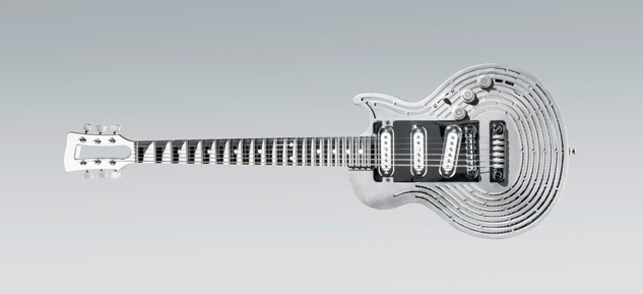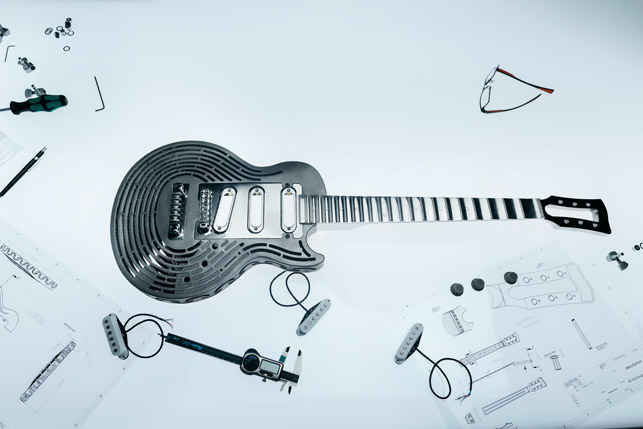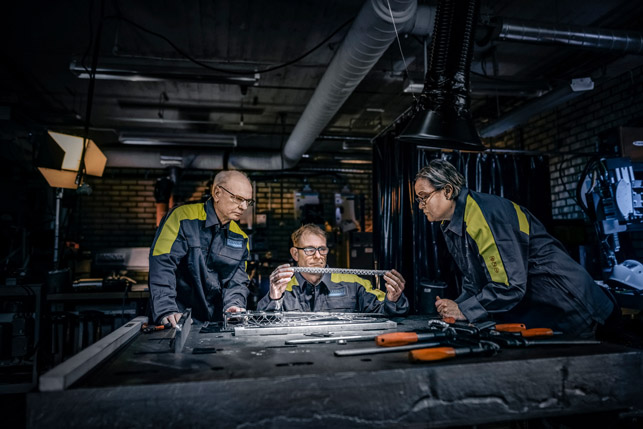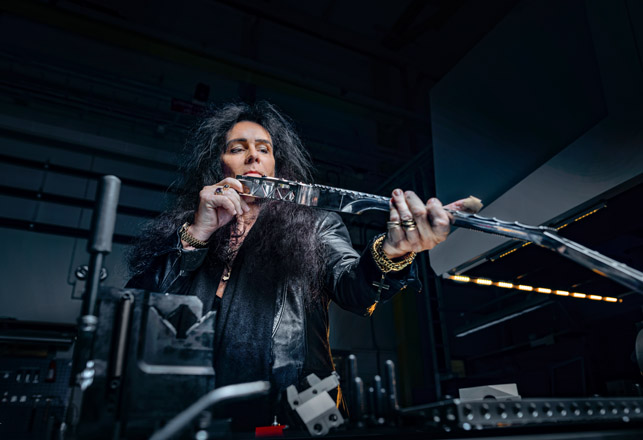
Metals 3D printing played a critical role in the production of this one-of-a-kind electric guitar
Rock stars have been smashing guitars for decades, few with more enthusiasm than Swedish-born guitar virtuoso Yngwie Malmsteen. Global engineering company Sandvik decided to test its cutting-edge techniques by building the world’s first all-metal, unbreakable guitar and then letting Malmsteen unleash his smashing skills upon it.
The company, a world leader in material innovation and manufacturing, engineered the smash-proof guitar to showcase how advanced, precise and sustainable its techniques are.
“We don’t make products for consumers, so people don’t realize how far in the forefront our methods are,” explained Klas Forsström, president of Sandvik Machining Solutions.
“Creating a smash-proof guitar for a demanding musician like Malmsteen highlights the capabilities we bring to all complex manufacturing challenges.”

Swedish guitar legend Yngwie Malmsteen has been thrilling audiences for over three decades
A virtuoso’s fury
Malmsteen, named one of the ten greatest electric guitar players in the world by TIME Magazine, is known for his virtuoso performances — as well as the fury he unleashes on his guitars. A master of neo-classical heavy metal, Malmsteen has produced 30 albums and has been smashing guitars onstage for over three decades.
“This guitar is a beast! Sandvik is obviously on top of its game. They put the work in, they do their hours. I can relate to that,” Malmsteen said. “The result is amazing. I gave everything I had, but it was impossible to smash.”
Sandvik engineers teamed with renowned guitar designer Andy Holt, of Drewman Guitars, to match Malmsteen’s exacting musical standards and his lightning-fast playing style.
“We’ve had to innovate from the top down. There’s not a single part of this guitar that has been made before. It’s a piece of art, really,” explained Holt.
“The weak point in any guitar is where the neck joins the body. Sandvik solved the problem by milling the neck and the main hub of the body as one piece. You could use the guitar as a hammer and it wouldn’t break,” he said.

The finished guitar combines Sandvik’s mastery of cutting metal with new additive manufacturing techniques
Sandvik – team effort
Several different divisions of Sandvik collaborated to make the instrument. For the guitar’s 3D-printed body, Sandvik relied on its world-leading expertise in metal powder and additive manufacturing. Lasers traced a design in beds of fine titanium powder, fusing layers of material, one on top of another. The layers, each thinner than a human hair, were built up to make the body of the guitar.
“Additive manufacturing allows us to build highly complex designs in small production runs,” said Amelie Norrby, additive manufacturing engineer at Sandvik.
“It lets us create lighter, stronger and more flexible components with internal structures that would be impossible to mill traditionally. And it is more sustainable, because you only use the material you need for the component, minimising waste.”
Software-based precision
The guitar’s neck and fretboard, meanwhile, were machined by Sandvik Coromant on one machine, from a solid block of recycled stainless steel.
“Precision was critical,” said Henrik Loikkanen, machining process developer at Sandvik Coromant. “Our software is built on years of experience, giving tool and cutting data recommendations that helped us mill the fretboard down to a challenging thickness of one millimetre in places.”
The next challenge was to strengthen the fret and neck as they extended into the guitar’s body. That solution took the form of a new, super-light lattice structure that was sandwiched between the guitar’s neck and fretboard. Made from hyper-duplex steel, a recent Sandvik innovation, the lattice structure is said to be the strongest in the world for a given weight.
“Collaborating like this, working together to solve even more complex problems, is key for the future,” said Tomas Forsman, product development specialist at Sandvik.
“Our customers’ challenges continue to grow more and more complex. We need to bring our expertise to work hand in hand with our partners and customers to invent new ways of meeting those challenges.”

The team took great pains to get the guitar not only looking right, but also playing as well as a master like Malmsteen would expect

Malmsteen was on hand to guide development to meet his needs, including a signature scalloped fretboard

From the steel neck and additively manufacturered body and lightweighted control knobs, the Sanvik guitar is a beast
To watch a video about the building & testing of the smash-proof guitar click here
10 design facts about Sandvik’s unsmashable guitar
1 The guitar body was produced by metals 3D printing, using laser-melted titanium powder in microscopically thin layers
2 The guitar’s volume knobs and the tailpiece that anchors its strings were also created with 3D printing
3 Additive manufacturing minimises waste and reduces transport and warehousing requirements, because components can be printed in small series, close to where they are needed
4 The guitar neck and hub were made of recycled stainless steel and milled in one machine, in one continuous process
5 Extra material was milled from between frets to meet Malmsteen’s preference for a scalloped fretboard
6 The back of the guitar’s neck is hollowed out from the inside and is only 1mm thick in places
7 Advanced software allowed Sandvik Coromant to simulate milling digitally before the first cut was made, enabling the correct choice of tools, saving manufacturing time and ensuring desired outcomes were achieved
8 Made of hyperduplex steel, the lattice structure used inside the guitar neck is the strongest structure in the world
9 Only Sandvik makes hyper-duplex steel, combining high-yield strength and extreme corrosion resistance not seen before
10 Before the guitar was built, Sandvik simulated potential impact forces in the same way as carmakers digitally crash-test new models
Sandvik SAF 2707 HD: A Hyperduplex stainless steel
Sandvik SAF 2707 HD (UNS S32707) is a hyper-duplex stainless steel, manufactured exclusively by Sandvik, which offers a pitting resistance equivalent (PRE) value of 48 as a minimum.
This particular grade of steel is characterised by excellent chloride corrosion resistance, combined with very high mechanical strength, making it particularly suited for use in aggressive environments such as hot chlorinated seawater and for highly acidic, chloridecontaining media.
According to Sandvik, it offers better resistance to pitting and crevice corrosion than all other superduplex stainless steel grades available on the market. It’s also a very competitive alternative to more costly nickel alloys and high-alloy austenitic stainless steels used in demanding applications such as tropical seawater and severe corrosive environments in the chemical and petrochemical processing sectors.
The excellent performance of Sandvik SAF 2707 HD, according to the company, is helping to increase service life and reduce maintenance in many types of heat exchanger, where it contributes to better reliability by minimising the risks of leakage and contamination.






